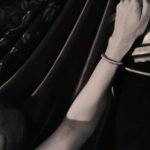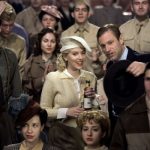The Black Dahlia, 2006
The Black Dahlia
Inspired by the most notorious unsolved murder in California history.
Images
Graphic images ahead, proceed with caution

The Original Glasgow Smile
“Darlene always had a lot of boys around, even though she was married. This one guy was weird though. He used to bring her presents from Tijuana. I don’t know why she was friends with him. She once told me he’d killed somebody.'”– Clea DuVall as Linda del Buono in Zodiac, 2007
We can trust Brian De Palma to take a mind-boggling, shocking and a true crime so evil in its execution and presentation that it not only shook Hollywood in 1947 but still remains a horrifying mystery to this day, and turn it in to something more complex (not viewer friendly at all) than the ill-fated Heaven’s Gate, 1980, a 315 minute film loosely based on the Jackson County War.

Two cops who have been recently promoted to the ranks of detective, literally stumble upon the crime scene. De Palma uses a long tracking shot, starting from a fishing store (being staked out by the cops); his camera rising until we can see a park beyond the edge of the fishing store roof. The camera moves in cautiously (as if to carefully approach the revelation) as the morbid and monstrosity of a discovery is made by a lady walking with her baby in a stroller. It reminded me of the Odessa Steps from Battleship Potemkin, 1925 and the lady with a child in a baby carriage. She loses her grip on the stroller and it goes bouncing down the steps in Battleship Pokemon. Here the lady with the babe lets out a loud shriek and moves along, her pace fast and urgent.

It also reminded me of The Untouchables, 1987 and the Union Station sequence; another true crime narrative by the auteur of real-deal thrillers and neo-noir and mind-fuck. The long shots continue throughout the film with its breathtaking cinematography by Vilmos Zsigmond that recreates the Hollywoodland of the the new look era Forties with its Hollywood Glamour Girls, perfectly, capturing the period in all its essence and then some.

Mia Kirshner as Elizabeth Short (uncanny)
Dark, full of menacing shadows and with melancholic set design, The Black Dahlia is a period piece; stark and tragic and brutal. The set-pieces are dark and velvety and almost dreamlike. In scenes when a cop is obsessing over the crime scene photos and when the film takes a complete shift from its neutral dark tone to an even more sombre, uninviting, heavy-hearted revelations coupled with images of Elizabeth Short during auditions/stag (pornographic) tapes shot by a Bell & Howell 8mm Magazine Camera, succeed in creating an atmosphere so tense that ambiguity is not an option. Not after reaching this level of tenebrosity.
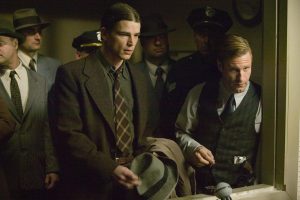
The dialogues get shorter and their delivery more technical and calculated as the movie progresses with its twenty three plots trampling over each other to get to the audience. Unfortunately very little do – get across. The high pitch of the saxophone and the bass pinching in a Jazz scale raises the film’s feel. It looks scenic; the actors perform like how they’ve been asked to perform by Mr. Mission Incomprehensible, the camera angles captures some really breathtaking scenes and the film lurches from one funeral set piece to another.

However, if the cinematography raises the film, the script, which has become gibberish by the end, pulls it way down. Plus Palma’s insistence on giving some sort of closure to the cold case file ends in bad taste. The film enters Evil Sunset Blvd. territory, which would have been alright had the rest of the film not been that vague and then change its pace and values an hour and half later, as we are shown an abandoned rental storehouse.

The silver of the audition tapes makes actress Mia Kirshner as Short look even more desirable and remarkable, albeit not without the staple shot of the crestfallen Short looking straight in to the camera and shedding tears while shooting a sex scene. All this after she has told the people behind the camera how utterly desolate she is.


“[sic] She was a naughty girl.”
Written for the screen by Josh Friedman and based on the highly acclaimed and the as accurate as can be retelling of the murder in his book titled The Black Dahlia, author of L.A. Confidential, James Ellroy provides more fodder that any other lesser director would have run away from, like the lady who discovered Short’s corpse.
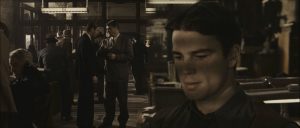
Harvey Dent plays Detective Lee Blanchard. A man of law and politics who is obsessing over the murder since the first time he laid his eyes on the Joker-faced corpse. His motives are made relatively clear by the end and they don’t look noble at all.

Hartnett pushes himself to step out of that pretty boy body and try to keep up with the investigation and De Palma. Sadly, it does not work too well; specially when Hillary Swank shows up. And she does not resemble Mia Kirshner nor Betty Short; heck she doesn’t even resemble anything pretty. Rosario Dawson and Swank should overdose on their false self of the narcissist. Oh, and the fucking Sports Illustrated Swimsuit Issue Pin Up Calendar, Centerfold sexy is here. That kinda sexy is called Under the Skin.
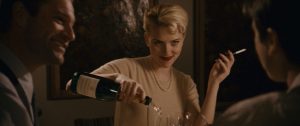
The two leads are shown spiralling down in to a web of deceit, cover ups, double crosses, Delphic surgeons, physicians and practical jokes gone bad. Basically their lives are not all sunshine with no windows in sight.

Well, maybe one window in sight
It’s annoying and then I am told that I can describe the film and its parts as I like with as many words as I would like to put into use. However do not disrespect. Huh? What? Like the rest of the film, the boobs were there to entertain and I write about them boobies too. Why? You gotta be slow or five not to know.

“Why Hollywood won’t cast Hartnett anymore” and Two Face
Highly stylish with De Palma’s signature trembling a little, The Black Dahlia is a film that impresses but frustrates with its tepid or clueless performances, except Harvey Dent and Mia Kirshner, and a highly cryptic screenplay that loses momentum and direction for a good fifteen to twenty minutes before Hartnett realizes that it has been five years since Black Hawk Down, 2001. However, however; if you remember how Sin City, 2005 begins, you will know where The Man is coming from.
“The wind rises electric. She’s soft and warm and almost weightless. Her perfume with sweet promise that brings tears to my eyes. I tell her that everything will be alright. That I’ll save her from whatever she’s running from and take her far far away. I tell her I love her. [gunshot] The silencer makes a whisper of the gunshot. I hold her close until she’s gone. I’ll never know what she was running from… I’ll cash her check in the morning.” – The Salesman
Lovely stuff.

To bring you guys back to the matter at hand
The cold case file remains to be just that, cold and vicious and unbearable and excruciating for the men of Law. It has been almost nine years since the body of Elizabeth Short was discovered in Leimert Park, Hollywood. There has been speculation; fingers have been pointed, a former LAPD homicide detective, Steve Hodel has come forward and implicated his deceased father in the crime. Coupled with preposterous confessions and a gazzilion leads, it does not matter anymore. Nope. Short is (most sadly) now only a negative association in Hollywood, like Roscoe ‘Fatty‘ Arbuckle and the incident at the St. Francis Hotel in San Francisco going back to 1921.

What matters is the fact that Hollywoodland is not all glamor and glitz and cocaine and underage prostitutes being bathed in champagne (where the fuck did that come from?) and fast cars and Justin Bieber taking a piss in Selena Gomez‘s anus (wha…???), but we all know that. It is also an extremely terrible place if you get lost in Sin City. We know that part too.
CAUTION: Graphic images
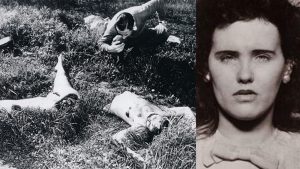


A good to an almost great film by one of my favourite directors about one of the most fascinating and intriguing and spine-chilling homicides in history, The Black Dahlia was right up or down or sideways or doing gymnastics (in) my alley.

Elizabeth Short
“Poor Betty… her problem wasn’t too many enemies; it was too many friends.” – Sheryl Saddon
“Shoot the picture?”
“Technicolor”
I could watch it again in a year or so. Yeah.




